Climate is an important consideration when choosing varieties of chickens to raise. A mismatch between breed and location can be disastrous for chickens and owners alike.
For example, heavily feathered chickens could experience heat stroke in a state with hot summers. On the other hand, chickens with large combs and wattles are likely to succumb to frostbite during cold weather.
Clearly, it is essential to check whether chickens’ characteristics equip them well for a specific state’s weather.
So, what are the best egg-laying chickens to raise in Indiana? Let’s look into it.
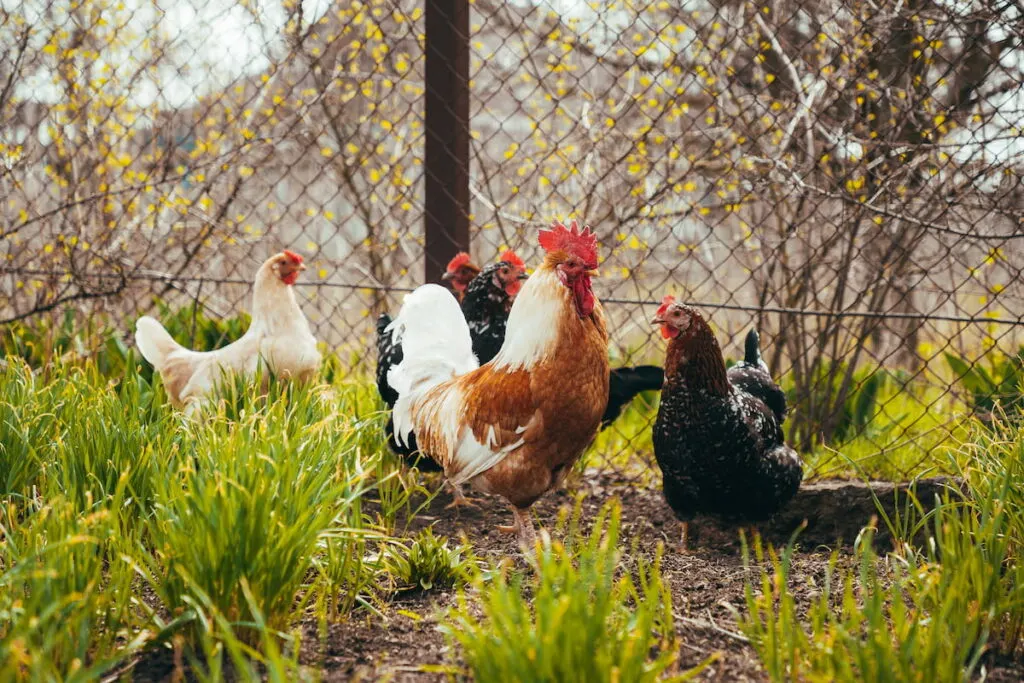
Table of Contents
Indiana’s Climate
The climate in Indiana varies throughout the year, meaning the state has four true seasons. However, compared to many states, Indiana is quite cold overall.
The average low temperatures in Indiana reach below freezing starting in November. Freezes continue through the month of March.
From June through August, the high temperatures reach the low 80s Fahrenheit (20s Celsius). The rest of the year, the temperatures are moderate.
However, even when it’s not freezing, Indiana’s weather can be somewhat cold. The average lows are in the 30s and 40s Fahrenheit (4o-10o Celsius) during parts of the spring and fall.
9 Breeds Suited for Indiana
Since freezes take place for almost half the year in Indiana, it is very important to find cold-hardy chickens to raise in this state.
Certain characteristics make chickens more likely to thrive in a cold climate. These include larger body sizes and thicker feathers.
Small combs and wattles are particularly important traits. These characteristics help to protect chickens from frostbite.
Here are nine breeds that are good egg-layers and also have what it takes to survive Indiana’s cold climate.
1. Ameracauna
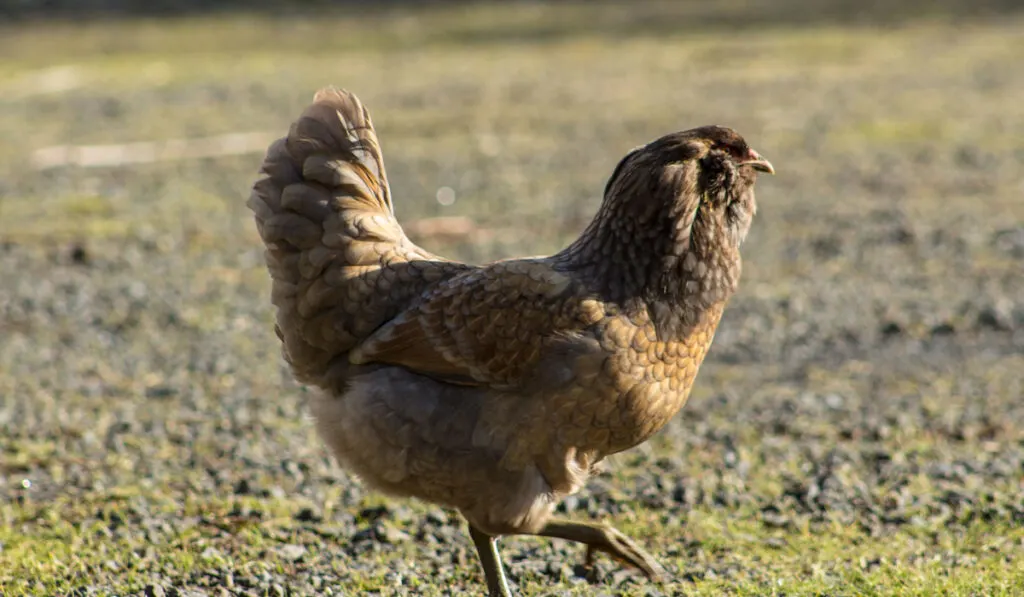
As the name implies, this breed originated in the United States. Ameraucanas are known for being gentle, friendly chickens.
They lay around 200 medium-sized blue eggs per year. In addition, their small combs and wattles protect them from frostbite during the winter.
2. Australorp
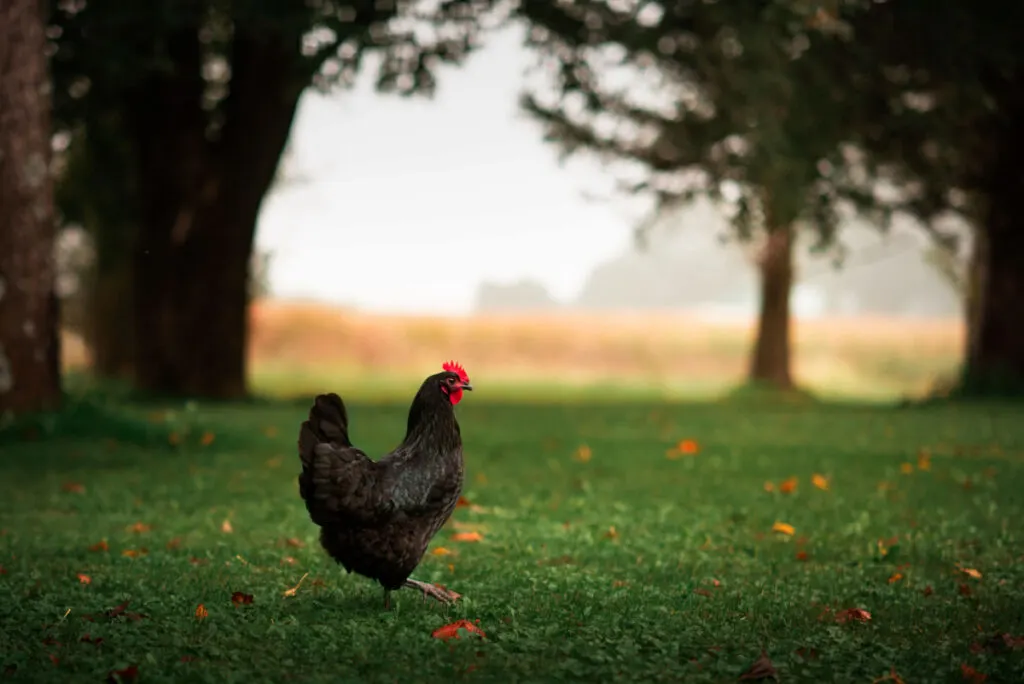
After Orpington chickens were first brought to Australia, they were crossed with several other breeds. The result is known as the Australorp.
Australorps can easily lay 300+ eggs a year. In fact, they have set the world record for laying the most eggs in a year: 364 eggs in 365 days!
Though Australorps are considered a cold-hardy breed, they have larger combs than some chickens on this list. Putting petroleum jelly on their combs can help protect them from frostbite.
3. Buckeye
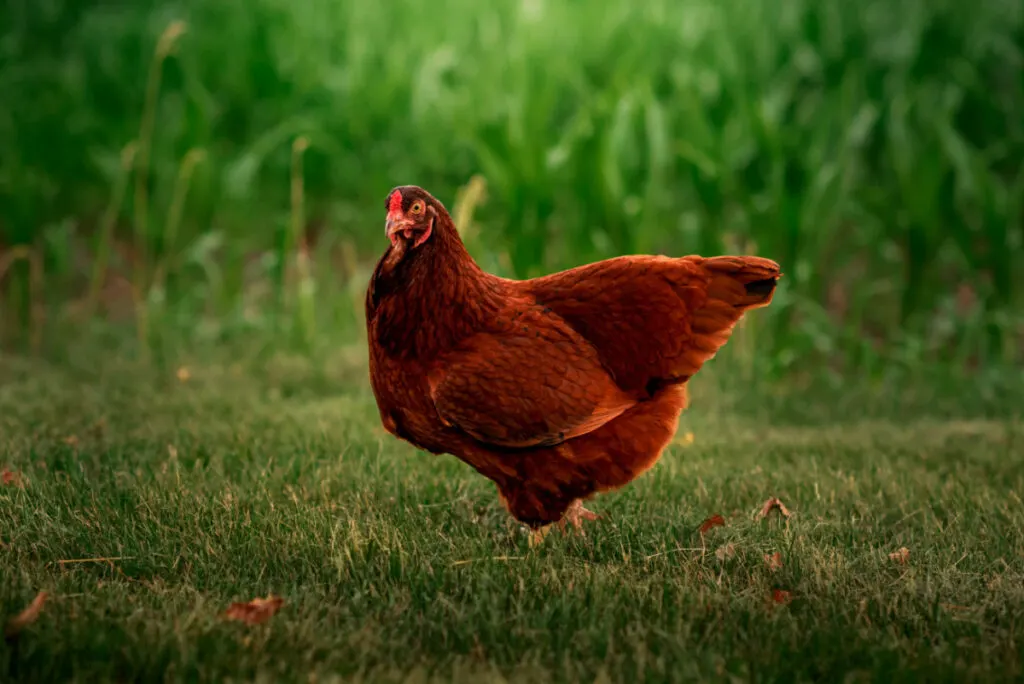
This breed originated when Nettie Metcalf crossed Buff Cochins, Barred Plymouth Rocks, and a few other chickens. Their name comes from Ohio, the Buckeye State, where they were first bred.
These chickens are known for their quiet, affectionate personalities. They thrive when allowed to range freely.
Buckeyes lay between 150 and 200 eggs each year. In addition, their small pea combs make them less vulnerable to frostbite than many breeds.
4. Chantecler
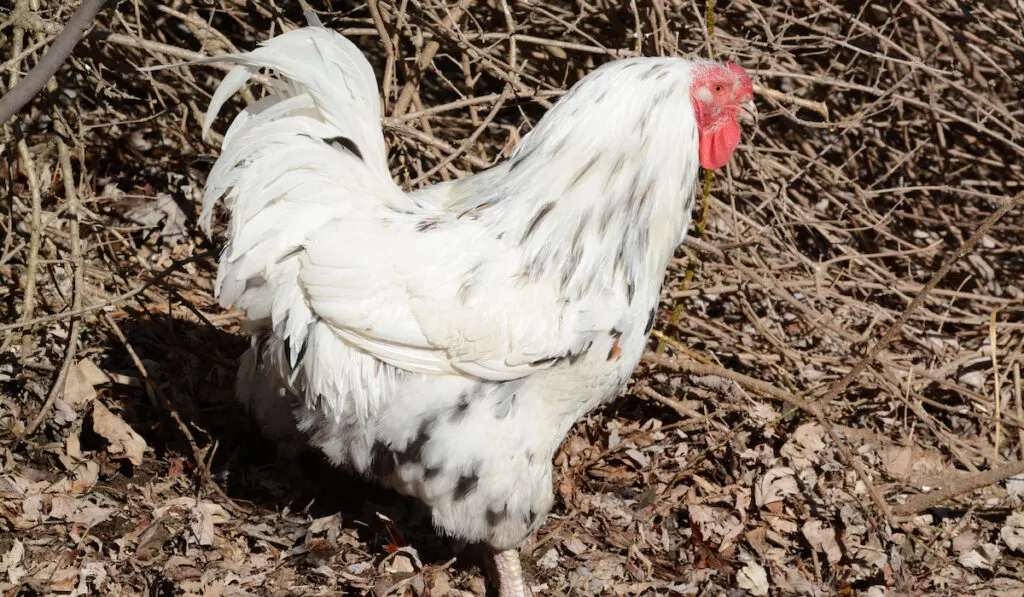
Chanteclers were the first unique variety of chicken bred in Canada. As such, it is no surprise that they are well-suited to cold temperatures.
Their small combs and wattles provide protection from frostbite. In addition, their large body size provides further insulation.
These chickens lay about 180 eggs per year. They continue laying during the cold winter months.
In addition to being good layers, Chantecler hens are known to be good mothers. Thus, they are a great choice of chickens to breed in a cold climate.
5. Dominique
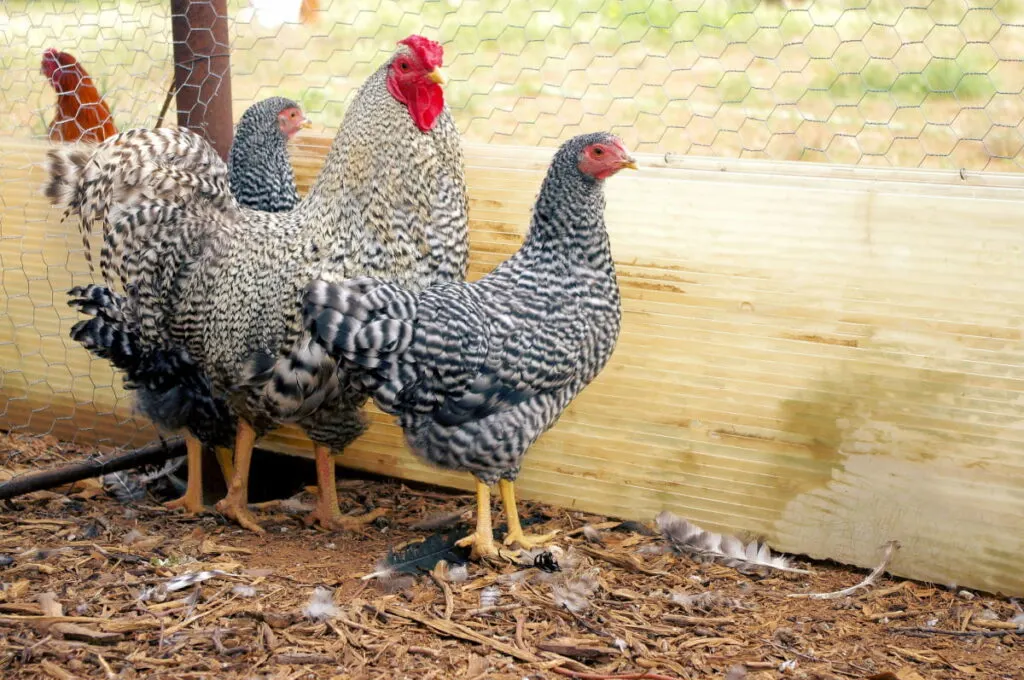
The Dominique breed was the first variety of chicken to originate in the United States.
They are dual-purpose chickens, meaning they can be raised for both eggs and meat. They lay 150-200 eggs per year.
Dominiques’ pea combs help prevent them from getting frostbite. They are so cold hardy that they are commonly raised in Alaska and Canada.
6. Easter Egger
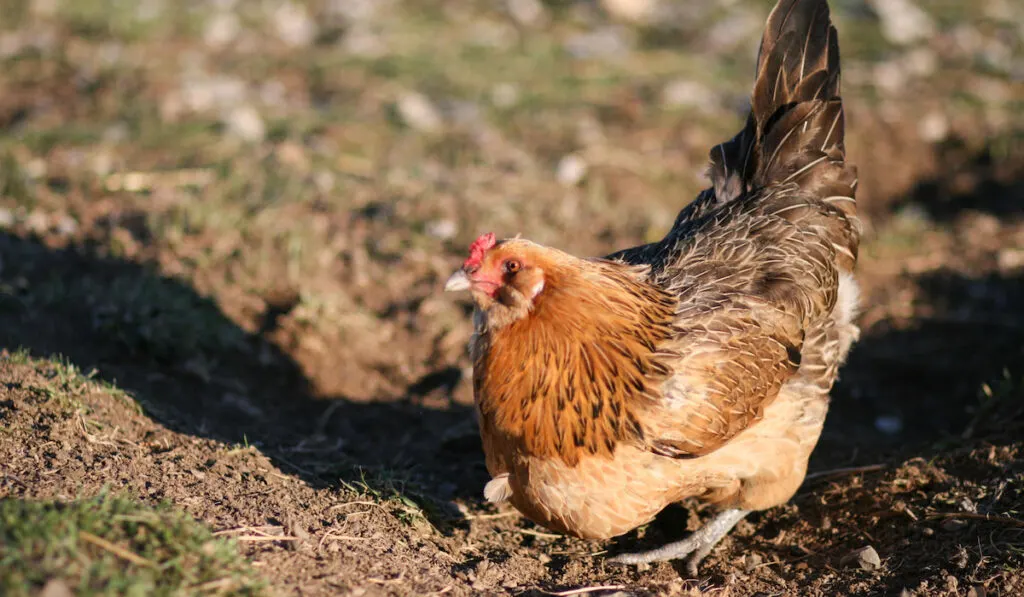
Easter Eggers are technically a mixed breed rather than a distinct recognized breed. However, this does not keep them from being one of the most popular chicken varieties.
Their name comes from the brightly colored eggs they lay. They are prolific layers, averaging between 200 and 280 eggs a year.
These chickens are known to be hardy and thrive in a variety of temperatures. They have small combs and wattles which reduce their risk of getting frostbite in the winter months.
7. Orpington
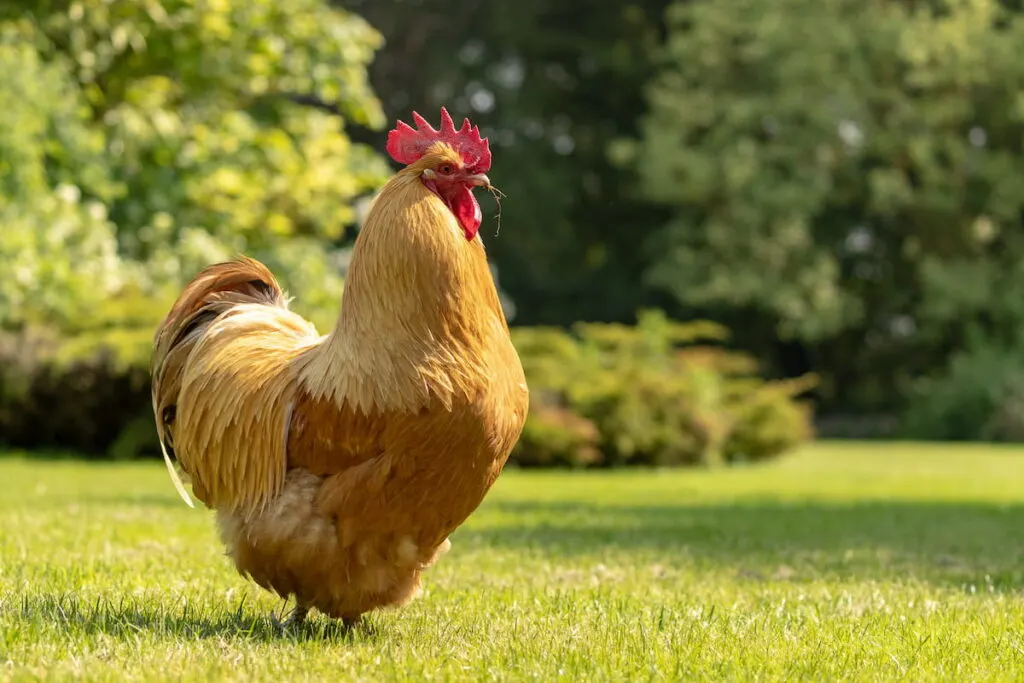
Orpingtons have several traits that make them well-suited to cold weather. These include plump bodies, fluffy feathers, and relatively small combs.
However, their single combs are more vulnerable to frostbite than some other kinds of combs. Owners raising Orpingtons in Indiana may want to apply petroleum jelly to their combs for extra protection in cold weather.
These chickens are keen foragers. They lay between 170 and 200 eggs each year.
8. Sussex
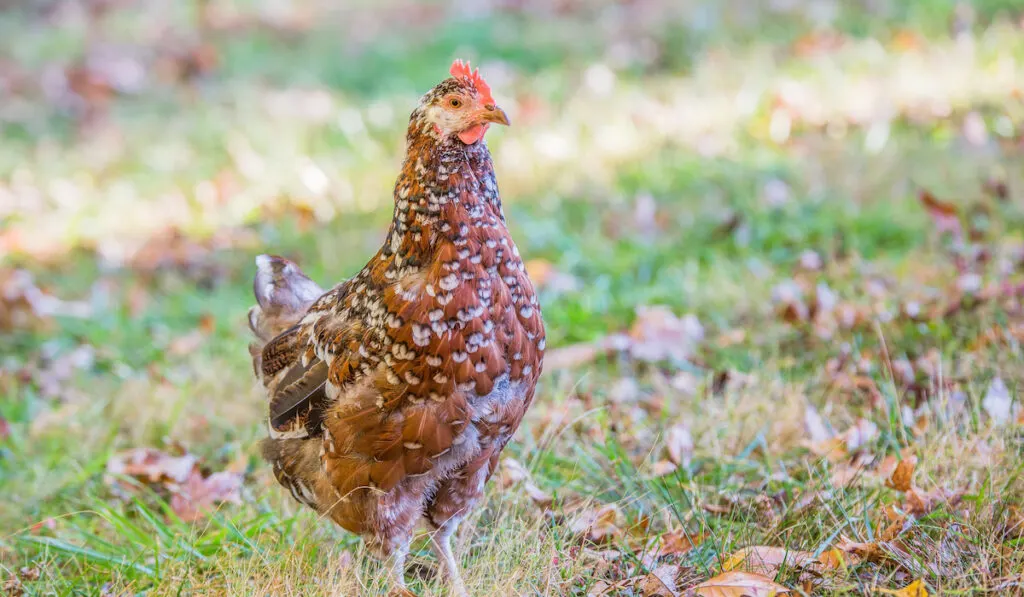
These chickens are believed to have originated during the first century AD. This makes them one of the oldest chicken breeds in the world!
Sussex chickens are known to be sweet-natured and good with children. With large bodies, thick feathers, and small combs, they are definitely a cold-hardy breed.
These dual-purpose birds lay between 180 and 250 eggs per year. They also continue laying during the winter months.
9. Wyandotte
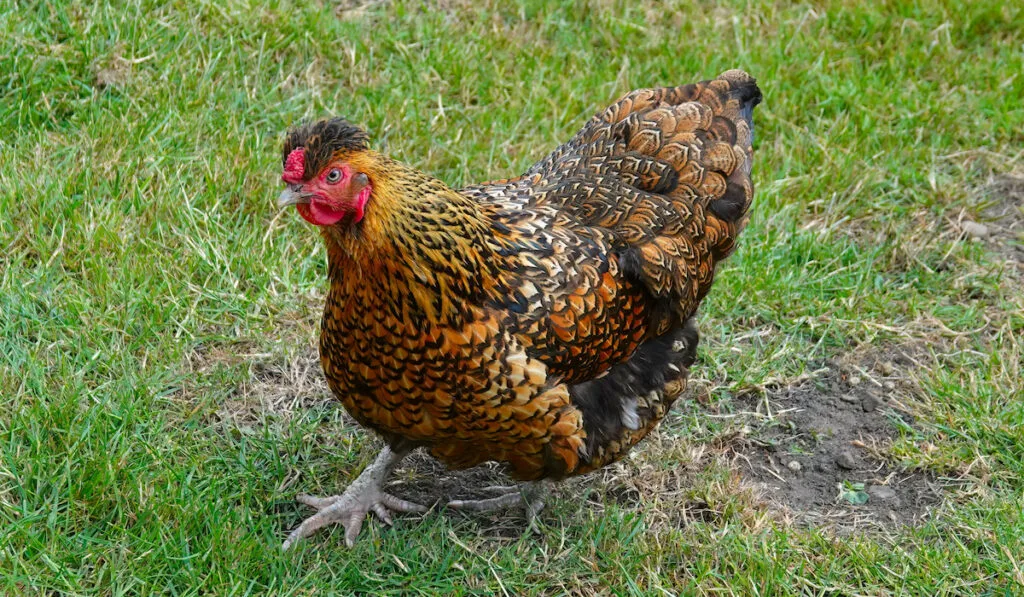
Wyandottes’ history stretches back to the mid-nineteenth century. They are known for their friendly personalities.
These chickens’ large bodies help them stay warm in the winter. Their small combs keep them safe from frostbite.
They continue laying eggs during the winter months. On average, they lay 150-200 eggs a year.
Final Thoughts
It is always important to take climate into consideration when choosing a breed of chickens to raise. This helps to ensure the chickens will be able to thrive in the climate where they are living.
Raising chickens in Indiana presents a unique challenge. In this state, temperatures can reach below freezing five to six months out of the year.
As such, people looking to raise chickens in Indiana must make sure to find birds that can tolerate these low temperatures. The breeds listed above are uniquely adapted to thrive in this state’s climate.
Resources:
- http://www.worldclimate.com/climate/us/indiana
- https://www.homesteadingwhereyouare.com/2021/01/05/best-cold-weather-chicken-breeds/
- https://www.knowyourchickens.com/cold-hardy-chickens/
- https://thehensloft.com/best-egg-laying-chicken-breeds-for-cold-climates/
- https://pethelpful.com/farm-pets/7-Hardy-Chicken-Breeds-That-Do-Well-in-Both-Hot-and-Cold-Temperatures
